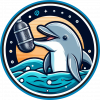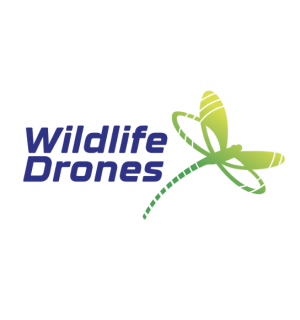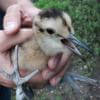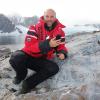Wildlife tracking technologies have already massively advanced our understanding of the natural world, from uncovering previously mysterious migration patterns and key movement corridors to demonstrating the impacts of anthropogenic pressures and climate change. Recent advances in the development of technologies for collecting and transmitting biologging data have unlocked the potential for fine-scale data collection at a near-global scale, which when integrated with remotely sensed environmental data offers an unprecedented biological lens into ecosystem health and environmental change (Jetz et al. 2022).
New technologies on the horizon include small satellites like CubeSats, which are being investigated by NASA, the ICARUS Initiative's satellite system, and a variety of other ventures aiming to improve the coverage, accuracy, and capacity of wildlife tracking data collection. Combined with the increased availability of high-resolution environmental data and analytical developments in movement modeling, these advancements are empowering movement ecologists to ask previously unanswerable or unimaginable questions. It’s clear that this discipline sits at the precipice of major breakthroughs that could revolutionize our understanding of animal movement and the natural world.
- 0 Resources
- 3 Discussions
- 2 Groups
Freaklabs
I'm an engineer and product designer working on wildlife conservation technology.



- 0 Resources
- 271 Discussions
- 13 Groups
Founder & CEO of we.are.tohorā, creating a community that cares about whales, the environment and each other.
- 0 Resources
- 0 Discussions
- 13 Groups
- @StephODonnell
- | She / Her
WILDLABS
I'm the Community Manager at WILDLABS



- 152 Resources
- 657 Discussions
- 30 Groups
- @dterlip
- | He/Him
Career technologist looking to move into the conservation space
- 0 Resources
- 1 Discussions
- 3 Groups
- @Sarvagya
- | He/Him
- 0 Resources
- 0 Discussions
- 7 Groups
Conservation Science Coordinator for the Giraffe Conservation Foundation
Co-Chair of IUCN Giraffe and Okapi Specialist Group
- 0 Resources
- 1 Discussions
- 5 Groups
- 0 Resources
- 0 Discussions
- 5 Groups
- @Gathoni
- | Her/she
PhD Candidate at Nottingham Trent University, UK. Ecologist with a passion for wildlife conservation and conservation technology with foundational training in BSc and MSc Rangeland Management (Ecology option). Current project: Use of acoustics to monitor ecosystem restoration.
- 3 Resources
- 0 Discussions
- 7 Groups
- @leonardoscarpa
- | He/His
I'm Leonardo, I'm a biologist, and I'm passionate about movement ecology. Another of my hobbies is GIS. I have a master's degree in this topic, which I complement with the use of technology such as drones, camera traps and acoustic receivers
- 0 Resources
- 0 Discussions
- 10 Groups
Jack of all trades and master of none
- 0 Resources
- 3 Discussions
- 2 Groups
Friends of Brisbane Ranges

- 0 Resources
- 32 Discussions
- 5 Groups
Careers
The Smithsonian National Zoo & Conservation Biology Institute is seeking a Program Manager to help coordinate multiple organizations in an effort to integrate movement data & camera trap data with global...
22 April 2024
The Smithsonian National Zoo & Conservation Biology Institute is seeking a Postdoctoral Research Fellow to help us integrate movement data & camera trap data with global conservation policy.
22 April 2024
Article
You’re invited to the WILDLABS Variety Hour, a monthly event that connects you to conservation tech's most exciting projects, research, and ideas. We can't wait to bring you a whole new season of speakers and...
22 March 2024
Hussey Labs seeks a senior post-doctoral researcher/senior research associate for movement ecology of Greenland halibut in the context of fisheries management across Baffin Bay-Davis Strait, Eastern Canadian Arctic.
13 March 2024
Catch up on the conservation tech discussions and events that happened during World Wildlife Day 2024!
7 March 2024
more affordable pricing for our software for the visualization and annotation of GPS and acceleration data
4 March 2024
Careers
Seeking a doctoral student to join the Move.inFormation research group in an exciting new project investigating the use of social information for optimal movement in the Andean condor.
12 February 2024
Research topic: Pathogens and predators represent the ultimate and ubiquitous threats to fitness. One of the defense counter-strategies is behavioural avoidance of the cues of infection risk (disgust) and predation risk...
10 February 2024
The primary focus of the research is to explore how red deer movements, space use, habitat selection and foraging behaviour change during the wolf recolonization process.
10 February 2024
The Wildlife Restoration Foundation is hiring a Conservation Technology Intern
8 February 2024
In the last article of my series examining how people find biologging tech for their projects, I spoke with Annkathrin Sharp, a Programme Officer at Fauna & Flora about how her experience choosing DIY Biologgers to...
14 December 2023
In the penultimate article in my series examining how people find biologging tech for their projects, I spoke with Matthew Stanton about developing custom biologging technology for studying koala behaviour.
7 December 2023
June 2024
event
November 2023
event
| Description | Activity | Replies | Groups | Updated |
|---|---|---|---|---|
| I am working on that too haha. So in my design you load the glue gun with two part Loctite, it has two separate metal rings. Glue and hardener in each ring. Then each ring has a... |
+23
|
Biologging | 2 days 6 hours ago | |
| Hello @CourtneyShuert If I am not mistaken, Wildlife Computers was developing or has developed a remote release package for such an application as has a much smaller company... |
|
Biologging, Marine Conservation | 5 days 2 hours ago | |
| I'll find you some. Just organising all of our stock of these. |
+9
|
Biologging | 5 days 8 hours ago | |
| Hi everyone, @craig joined last month's Variety Hour to chat about Tagranger, which you can read more about here. A TagRanger®... |
|
Biologging, Connectivity, Sensors | 1 week ago | |
| 'Most importantly, we have to make it play a MIDI version of the DoctorWho theme song when you arm the device. That has to be the #1 feature if you ask me!' Seconded! |
+9
|
Acoustics, Biologging, Emerging Tech, Open Source Solutions, Sensors | 1 week 1 day ago | |
| Might very well be so! I highly encourage you to take up the challenge! |
+23
|
Biologging | 1 week 4 days ago | |
| This is so cool @Mauricio_Akmentins - congrats and look forward to seeing your project evolve! |
|
Acoustics, Biologging, Climate Change, Conservation Tech Training and Education, Data management and processing tools, Emerging Tech, Open Source Solutions, Protected Area Management Tools, Sensors, Software and Mobile Apps | 2 weeks 3 days ago | |
| You mention you're working with an engineer, here are a couple of pointers:with an SDR (the "digital USB receivers" you mention) you can scan some bandwidth to detect radio pulses... |
|
Biologging, Build Your Own Data Logger Community | 2 weeks 6 days ago | |
| Hello everyone, I'm interested in gathering insights on how the behavior of different species impacts the development and efficacy of... |
|
Biologging, Acoustics, Camera Traps, eDNA & Genomics, Emerging Tech, Marine Conservation | 1 month ago | |
| Hello Peter, Have you find a solution ? I will be happy to discuss with you about your project and field challenges ? Best,Virginie |
+26
|
Biologging | 1 month ago | |
| Thank you Carly, I will definitely take a look. |
|
Acoustics, Biologging, Climate Change, Conservation Tech Training and Education, Data management and processing tools, Remote Sensing & GIS, Software and Mobile Apps | 1 month ago | |
| Hi all, I am searching for marine species projects that monitor orientation/IMU and/or acceleration data... |
|
Biologging, Marine Conservation | 1 month 1 week ago |
New paper: Benthic animal-borne sensors & citizen science combine to validate ocean modelling
10 October 2022 4:15pm
"We develop the use of benthic species as animal oceanographers by combining archival (depth, temperature) data from animal-borne tags, passive acoustic telemetry & citizen-science mark-recapture records for the flapper skate in Scotland."
Open-source Argos satellite tag for bears - available now
7 October 2022 4:49pm
Humidity/Temperature/Light Level logger
27 September 2022 12:01am
7 October 2022 4:50pm
Hi David,
I've used our monitoring platform, PRTG (www.paessler.com), with environmental sensors for a server room, which included temperature and humidity. The monitoring platform is free up to a certain amount of sensors, so if this would be all you were using it for then it would be completely free of cost. Some hardware devices for environmental monitoring they have listed in one of their knowledge base articles are listed below, none of which I've used, but perhaps one of these would work, and if not, it will put you on the right track if you wanted to pursue this type of solution for what you are looking to do:
"All of these vendors offer physical sensors that can provide data about their environment. Connected to some kind of SNMP-enabled “management box” these sensors become network-enabled."
Cheers!
Rick
Long-term tracking of whale feeding behavior via satellite now possible with new tag
4 October 2022 5:20pm
Live Q&A Discussion on Ceres Tag: An animal monitoring Solution!
17 August 2022 6:57am
1 September 2022 5:48am
Hi Peter, Other users are having success embedding the tag into the rear face of the rear horn, see photos
26 September 2022 9:17pm
Is there any sort of automatic drop-off mechanism for the tags? Or does the animal need to be re-captured to take the tag off?
29 September 2022 3:52am
Hi Carly,
There are no built in automatic drop-off mechanism for the tags. We do have customers that have purchased and incorporated the tag into different types of harness and collars.
Happy to discuss further with you to understand your use case. Head over to www.cerestag.com and there is a "let's talk" button.
Conservation Tech Directory - new update!
29 August 2022 2:38pm
23 September 2022 5:26pm
Congrats on the milestone Carly and Gracie!
26 September 2022 10:07pm
Thanks so much!!
New paper: A novel method for identifying coded tags recorded on aquatic acoustic monitoring systems
26 September 2022 2:11pm
Authors demonstrated "a low cost, simple method to support acoustic tag surveys by identifying tags both from direct acoustic recordings & by reconstructing code packets from processed C-POD data. Method was applied to decode tag detections from bass & Twaite shad."
Avian nest box monitoring
14 September 2022 2:30pm
14 September 2022 3:08pm
Maybe this is a starting point. Any idea if this product would work inside the box. Kestrel DROP D3 Wireless Temperature, Humidity & Pressure Data Logger https://amzn.eu/d/5VdQwtA
23 September 2022 12:34pm
I'd be interested in any camera monitoring setups that can be used inside a nest box. Most camera traps are too bulky for this purpose. All the devices I've looked at either need a wired connection or a wifi network to transmit images. I want one that can store all info to an SD card and preferably be solar powered. Obviously infrared or starlight sensitivity. Sound recording would be a bonus for some bird monitoring I want to do.
23 September 2022 1:16pm
Done lots of this over the years and it depends on the species really. If you want incubation behaviour and hence success or otherwise using temperature then the Thermocron IButton DS1921G is perfect. The new Blue Maestro is an option I became aware of this year but I haven't tested at scale.
In terms of cameras and endoscopes I've tailored many off the shelf products and built a few from scratch. When I get chance I'll have a look around and see what is still available.
Movement Ecology Field Team and Data Coordinator: Osa Conservation [Open until filled)
22 September 2022 11:55pm
Workshop: Building UK Partnerships for Conservation Technology
22 September 2022 3:02pm
Animal Movement conference: Association for the Study of Animal Behavior (ASAB)
16 September 2022 4:32pm
First-of-Its-Kind Digital Platform Reveals Migration Data for Birds Across the Americas Just In Time for Fall Migration
16 September 2022 1:02pm
CFP - transnational biodiversity monitoring (from European Biodiversity Partnership)
14 September 2022 1:42pm
Catch Up with the Variety Hour: September 2022
6 September 2022 12:31pm
Virtual fencing / Kinetic energy harvesting / Holistic grazing
16 June 2022 7:12am
26 July 2022 11:13am
Hi,
One daily fix is planned for now. This will be challenging enough for KEH :)
Kr, D-
31 July 2022 5:15pm
I see, thanks!
One daily fix is quite limiting.
Do you have an idea how KEH might affect accelerometry?
Cheers,
2 September 2022 11:05am
I don't think KEH would influence accelerometry at all.
One other way to think about it is - the KEH is a movement sensor itself.
The GPS is quite a severe factor in the energy balance of the system, so if the data is perhaps not transmitted constantly, more frequent locks could be achieved. I believe GPS transceivers are becoming more and more efficient and the KEH enabled GPS should become an option soon.
Kr,
D-
Conservation Technology Research Internship
26 August 2022 4:58pm
Ceres Wild Rhino application
22 August 2022 1:29am
29 September 2022 4:05am
Catch Up with the WILDLABS Variety Hour: August 2022
10 August 2022 11:44am
Sydney seals: From Manly to Malabar, marine life sprawls across a city
8 August 2022 12:59pm
This came to me by way of my dad over the weekend, but it's is full of familiar names and has started popping up from other places in the conservation tech network. It's a gorgeous visual story via The Sydney Morning Herald, telling the tail of the return of fur seals in and around Sydney. It highlights PhD student Vanessa Morris' PhD research and the citizen science program Vanessa Pirotta created called Wild Sydney Harbour (www.wildsydneyharbour.com).
Ocean Tracking Network Symposium 2022
5 August 2022 2:47pm
SnapperGPS device giveaway
5 August 2022 12:53pm
Opportunity: Postdoctoral Researcher
4 August 2022 9:08pm
Get to Know WILDBEAR Awardee Alyssa Bohart
27 July 2022 10:12pm
Firetail - Tutorial Series 22.3 - An introduction to Firetail - Update 2022
26 July 2022 8:16pm
Glad to announce I just replaced the Firetail introductory tutorial with a 2022 revision centered around Firetail 9:
- general concepts
- Movebank data handling
- Map Viewport
- Studies handling
- Annotation overview
- AI-based segmentation overview (FireSOM)
and quite a bit more to get you an idea what is possible with the new version.
Postdoc: Spatial Ecology & Conservation of Bustard spp.
22 July 2022 7:45pm
Postdoc: Biologging & Behavioral Ecology of Marine Mammals
22 July 2022 7:42pm
International Workshop on Animal Movement Ecology & Human Mobility
22 July 2022 7:25pm
30 August 2022 6:24pm
British Ecological Society Movement Ecology conference
22 July 2022 7:20pm
CERES TAG
22 July 2022 3:36am























































9 October 2022 5:14am
Oh, that looks so good, and some heavy hitting design firms too!